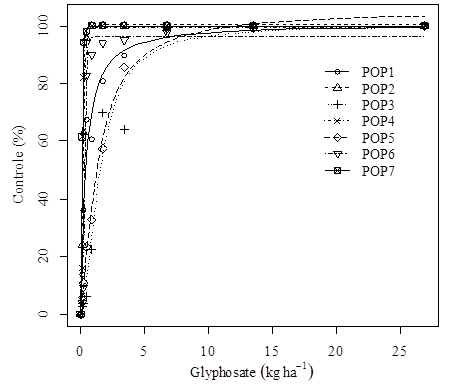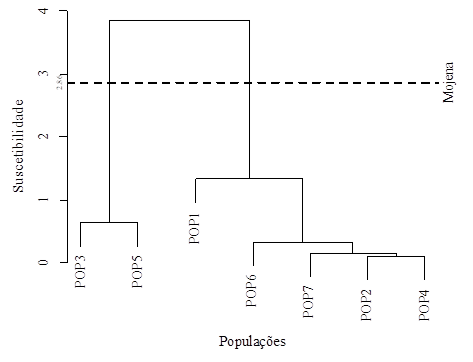ABSTRACT
Among the proven weeds proven resistance to glyphosate, the sourgrass (Digitaria insularis) stands out. In this sense, this work was developed with the objective of demonstrating that the susceptibility of different populations of D. insularis to glyphosate is a consequence of the chemical control history adopted in the agricultural areas. Seven populations of sourgrass from the southeastern region of Goiás (three from Silvânia, two from Gameleira de Goiás, one from Pires do Rio and one from Orizona) were analyzed using the dose-response curve and the differential susceptibility and the re-growth capacity of the sourgrass populations submitted to different doses of glyphosate (0, 0.11, 0.21, 0.42, 0.84, 1.68, 3.36, 6.72, 44 and 26.88 kg and ha-1). In addition, a herbicide susceptibility dendrogram was elaborated through UPGMA hierarchical cluster analysis. Sourgrass populations, managed five years ago with glyphosate associated with ACCase inhibitor herbicides, are susceptible to glyphosate; when they were treated intensively with glyphosate alone, were less susceptible. The same result was observed for cluster analysis, which indicated the formation of two groups, the first composed by populations from Silvânia, Orizona, Pires do Rio, Gameleira de Goiás conties considered susceptible to glyphosate and the second group composed of populations from Gameleira de Goiás e Silvânia counties, the least susceptible. The less susceptible sourgrass populations have a higher capacity for re-growth after treatment with high doses of glyphosate.
Keywords:
Chemical control; Digitaria insularis; dose-response; resistant

 Thumbnail
Thumbnail
 Thumbnail
Thumbnail
 Thumbnail
Thumbnail
 Thumbnail
Thumbnail



